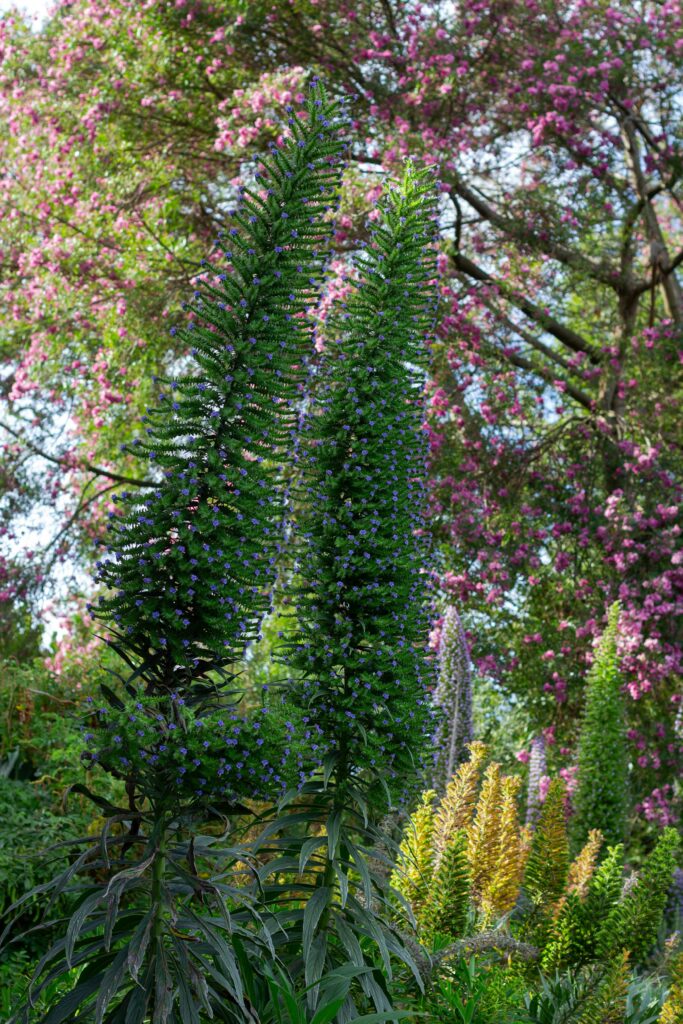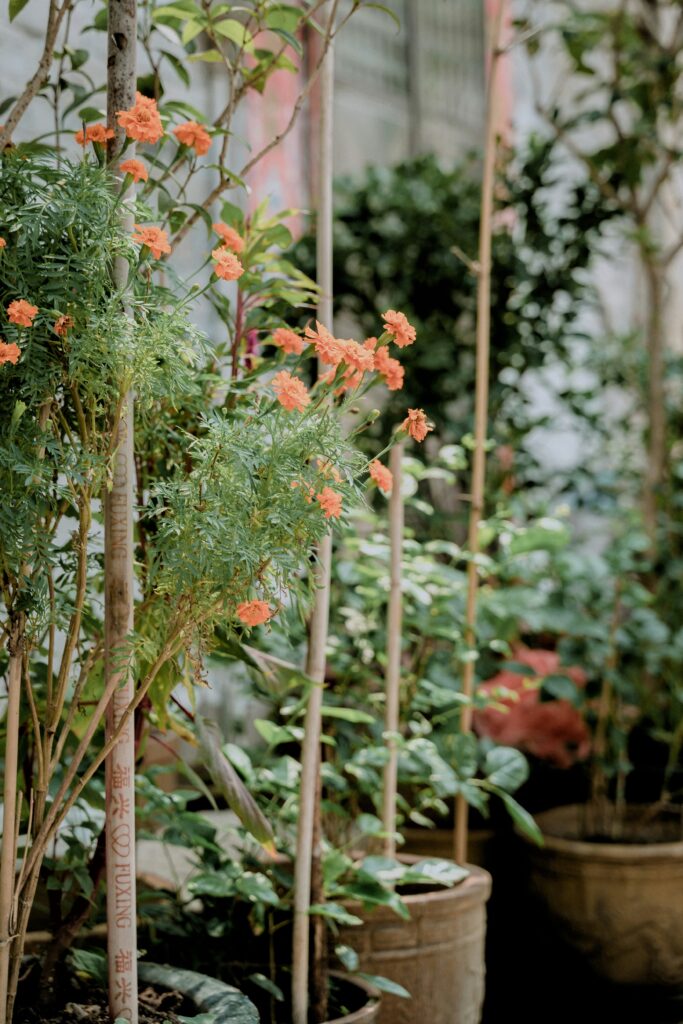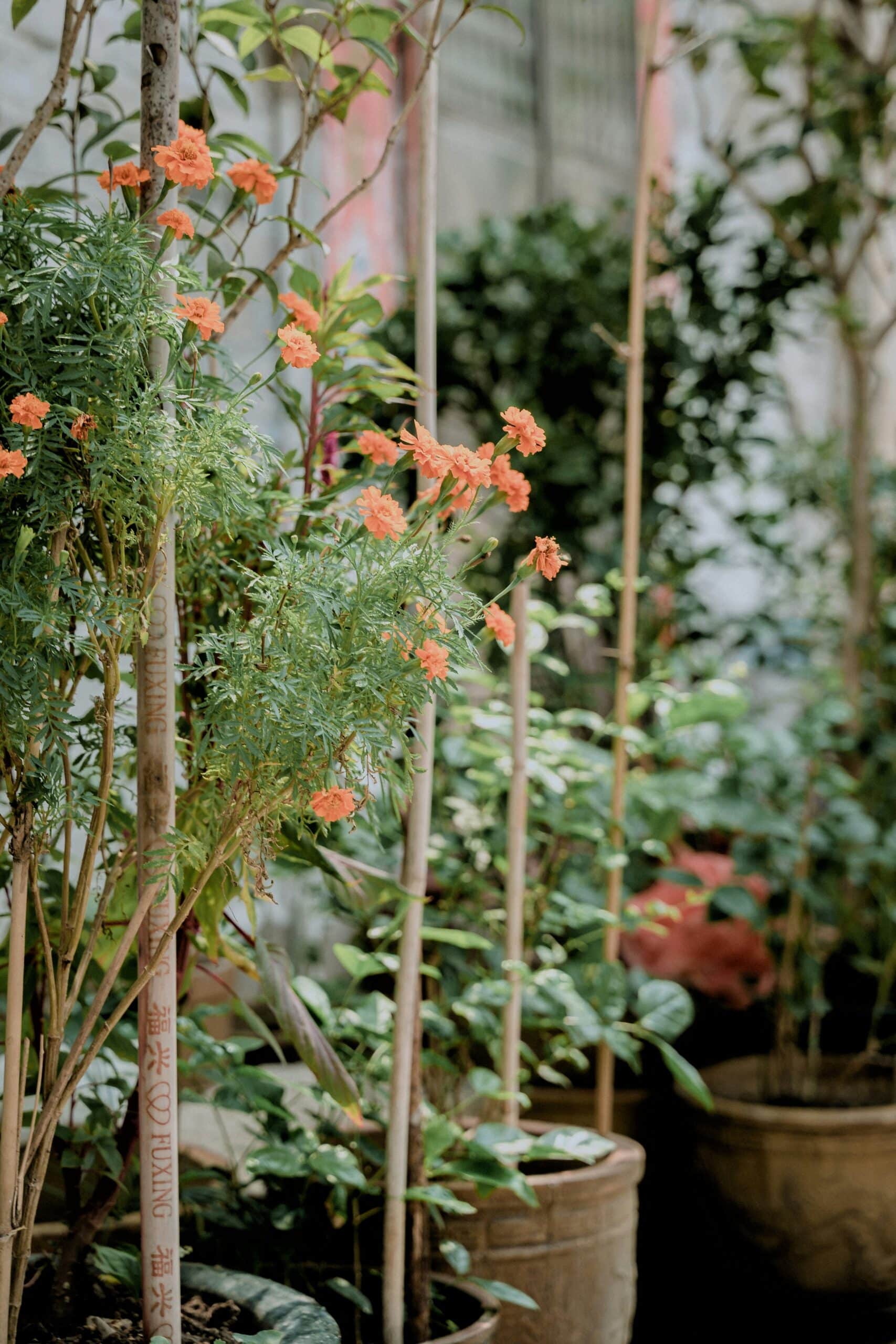Anúncios
If you’ve been yearning for the perfect blend of aesthetic appeal and air-purifying benefits, you’re in the right place. The topic at hand focuses on the best low-light vertical garden plants that can dramatically enhance the charm of any room.

Seldom can we underestimate the importance of greenery in our surroundings. However, not all plants thrive in the same conditions. For indoor gardening, it’s crucial to choose plants that can flourish in low-light conditions, ensuring their survival and growth.
Anúncios
In this comprehensive guide, you will uncover a selection of plants known for their resilience and adaptability to less sunny environments. As a bonus, many of these low-light tolerant varieties also bring along air-purifying properties, providing not just visual delight but also a healthier indoor environment.
We will explore a range of plants such as the heart-leaf Philodendron, Snake Plant, and ZZ Plant, among others. Each of these plant varieties has unique characteristics and offers different benefits, ensuring you can make an informed choice suitable to your living space and personal preferences.
Anúncios
Prepare yourself for an enlightening journey into the fascinating world of indoor vertical gardening. By the end of this guide, you’ll be equipped with all the knowledge needed to create a breathtaking vertical garden, even in the dimmest corners of your home. So, let’s embark on this green adventure and transform your indoor spaces into enchanting green havens.
Understanding Low-Light Plants
It’s vital to grasp the fundamentals of low-light plants before delving into the varieties suitable for vertical gardens. Low-light plants are species that can survive and flourish in environments where sunlight is minimal or indirect. Despite the term “low-light,” these plants still need some level of light to perform photosynthesis effectively. Their primary attribute is their ability to function efficiently with less light compared to other plant species.
Photosynthesis in Low-Light Conditions
Photosynthesis is the process where plants convert light into energy. In low-light conditions, the intensity of this process is reduced. However, plants have evolved to adapt to various environments. Some species, like those suited for low-light conditions, have developed mechanisms to maximize the use of the little light they receive. The efficiency of their chlorophyll—a pigment responsible for absorbing sunlight— is increased, allowing these plants to perform photosynthesis effectively even under less optimal conditions.
Benefits of Low-Light Plants in Vertical Gardens
Vertical gardens provide an aesthetic and space-efficient way of incorporating greenery into urban environments. However, they often have to deal with low-light conditions due to building shadows and the direction of sunlight. Low-light plants offer several benefits in such scenarios.
Space Efficiency and Aesthetic Appeal
Low-light plants are usually compact and ideal for vertical gardens due to their adaptability to limited spaces. They add a lush, vibrant appeal to the vertical space, enhancing the overall aesthetics. With the right mix of species, you can achieve a verdant display that remains fresh and appealing year-round.
Environmental Sustainability
Low-light plants also play a significant role in improving indoor air quality by reducing carbon dioxide levels and releasing oxygen. In addition, they help to balance indoor humidity, creating a healthier living or working environment.
Choosing the Best Low-Light Plants for Vertical Gardens
The choice of plants for your vertical garden largely depends on the amount of light available, the climate, and your aesthetic preferences. Here are some of the best low-light vertical garden plants that promise a lush and vibrant display.
Ferns
Ferns are a classic choice for low-light conditions. Varieties such as the Boston fern and the maidenhair fern thrive in indirect light and high humidity, making them perfect for vertical gardens in shaded areas.
Pothos (Epipremnum aureum)
Pothos, also commonly referred to as devil’s ivy, is a beloved and widely recognized houseplant that has earned a reputation for being incredibly low-maintenance and resilient. Its ability to thrive in a variety of indoor conditions—especially low-light environments—makes it an excellent candidate for vertical gardens, particularly in shaded or partially lit areas.
One of the most attractive features of pothos is its long, trailing vines, which can elegantly cascade downward or be trained to climb upward along trellises, wall grids, or hanging pockets. This natural vining habit makes pothos perfect for creating lush, layered textures in vertical spaces. The plant’s heart-shaped leaves come in various shades of green, often variegated with white, yellow, or pale green streaks, adding visual depth and contrast to any plant arrangement.
Pothos is also highly forgiving when it comes to care. It tolerates periods of drought, inconsistent watering, and even neglect—making it ideal for beginners or busy plant owners. Just ensure the soil is well-draining and allow it to dry slightly between waterings. Overwatering can lead to root rot, so moderation is key.
With its easy-going nature and attractive foliage, pothos serves as a foundational element in any vertical garden design, offering both functionality and beauty.
Spider Plant (Chlorophytum comosum)
The spider plant is another versatile and visually striking choice for vertical gardening, especially in indoor or shaded environments. Known for its long, arching leaves that resemble graceful green-and-white streamers, the spider plant brings a dynamic and flowing aesthetic to vertical displays. The plant’s architectural shape adds contrast and movement, making it a great companion to more compact or trailing species.
Spider plants are also renowned for their tolerance to a wide range of lighting conditions, from bright, indirect light to low-light corners, and they can adapt well to the fluctuating light levels typical of indoor spaces. Their low maintenance needs and resistance to common pests further enhance their appeal for gardeners of all experience levels.
One of the most charming features of the spider plant is its ability to produce “pups” or baby plantlets, which dangle from long stems like living ornaments. These pups can be left in place for a fuller appearance or propagated and replanted elsewhere, making the spider plant both beautiful and productive.
In vertical gardens, spider plants thrive in hanging containers or wall pockets, where their cascading foliage can drape freely and create a striking visual cascade.
ZZ Plant (Zamioculcas zamiifolia)
The ZZ plant is a stunning and almost indestructible indoor plant that makes a bold statement in any vertical garden arrangement. Famous for its glossy, dark green leaves and upright growth habit, the ZZ plant brings a touch of elegance and tropical flair to shaded spaces. Its thick stems and waxy, symmetrical leaves give it a sculptural quality that enhances modern and minimalist garden designs.
One of the key advantages of the ZZ plant is its exceptional tolerance to low-light conditions. It can survive—and even thrive—in environments where natural sunlight is limited, such as hallways, offices, or bathrooms with minimal windows. Additionally, the ZZ plant requires very little water, making it ideal for vertical systems with limited access or irrigation.
Due to its rhizome-based root system, the ZZ plant stores moisture effectively, allowing it to go weeks without watering. However, good drainage is essential to prevent rot. It’s also important to note that all parts of the plant are toxic if ingested, so it should be placed out of reach of pets and small children.
When integrated into a vertical garden, the ZZ plant provides structural height, bold color, and lush greenery with very little effort—making it a top-tier option for low-light spaces.
Philodendrons
Philodendrons are a diverse group of plants that can grow in various conditions, including low light. They are characterized by their large, glossy leaves, which add a vibrant touch to vertical gardens.
Maintaining Your Vertical Garden
While vertical gardens featuring low-light plants may generally demand less maintenance than those filled with sun-loving species, they are by no means completely hands-off. To ensure your vertical garden remains healthy, vibrant, and visually appealing throughout the year, it’s essential to implement a consistent care routine. Proper maintenance not only sustains the health of individual plants but also enhances the overall balance and beauty of your green installation.
Even low-light plants, which are often praised for their resilience and adaptability, require attentive care to thrive in a vertical setup. Factors such as humidity, airflow, watering frequency, and soil quality all influence their long-term performance. Neglecting these elements can lead to wilting, disease, or lackluster growth—diminishing the garden’s visual appeal and benefits.
Watering
Watering is perhaps the most crucial aspect of vertical garden maintenance, and achieving the right balance is key. Each plant species has specific water requirements, and these must be considered carefully—especially in a vertical arrangement, where drainage and evaporation can vary from top to bottom.
Some low-light plants, such as ferns and calatheas, thrive in consistently moist environments. They prefer their soil to remain damp but not soggy, as waterlogged conditions can cause root rot and fungal issues. These moisture-loving plants often benefit from a regular watering schedule combined with occasional misting to replicate their natural humid habitats.
On the other hand, low-light succulents or drought-tolerant plants like snake plants (Sansevieria) or ZZ plants (Zamioculcas zamiifolia) prefer drier soil and should be watered less frequently. Overwatering these types can be more harmful than underwatering, as their thick, fleshy leaves store moisture and are particularly prone to rot in saturated soil.
To maintain optimal watering conditions:
- Check soil moisture regularly using your fingers or a moisture meter, especially in deeper or top-tier pockets where water may drain too quickly or unevenly.
- Adjust watering frequency according to the season and environmental conditions. Indoor heating or air conditioning can affect humidity levels and evaporation rates.
- Use well-draining soil and containers with proper drainage to avoid water buildup, especially important in vertical garden pockets or modules.
- Consider self-watering systems or drip irrigation for larger installations to maintain consistent moisture levels while reducing manual labor.
Maintaining the right hydration for each plant not only promotes strong root development and vibrant foliage but also reduces the risk of pests and disease. By paying close attention to the individual needs of your plants and tailoring your watering habits accordingly, your vertical garden will continue to thrive in even the shadiest corners of your home or workspace.

Feeding
Although low-light plants tend to grow more slowly and require fewer nutrients than their sun-loving counterparts, regular feeding remains an essential part of maintaining a thriving vertical garden. These plants may be less demanding, but without an adequate supply of nutrients, they can become pale, leggy, or sluggish in growth over time.
To support healthy foliage, strong root systems, and overall resilience, it’s important to establish a balanced feeding routine. The best approach is to use a slow-release fertilizer specifically formulated for indoor or low-light plants. These fertilizers gradually deliver essential macronutrients like nitrogen, phosphorus, and potassium, along with trace elements, ensuring sustained nourishment over several weeks or months.
For even distribution, incorporate the fertilizer into the soil during planting or apply it periodically according to the product’s instructions. If you prefer liquid feeding, use a diluted houseplant fertilizer monthly during the active growing season (spring and summer), while reducing or pausing feeding during the plant’s dormant period in fall and winter. Always follow recommended dosage guidelines to avoid over-fertilizing, which can lead to salt buildup in the soil and damage plant roots.
Pruning
Pruning is a key horticultural practice that plays both an aesthetic and functional role in maintaining a vertical garden’s beauty and structure. In the confined spaces typical of vertical planters, unchecked plant growth can lead to overcrowding, reduced airflow, and competition for resources. Strategic and regular pruning helps prevent these issues, keeping your garden healthy, organized, and attractive.
Trim away dead, yellowing, or damaged leaves as soon as they appear to promote better air circulation and reduce the risk of disease. For vining or trailing plants like pothos or philodendron, pruning helps control length and encourages fuller, bushier growth by redirecting energy to new shoots. Similarly, compact plants such as peace lilies or ferns benefit from occasional thinning to prevent clumping and allow light to reach all foliage layers.
Use clean, sharp pruning shears or scissors to avoid crushing stems and spreading infections. Always cut just above a leaf node or stem junction to encourage optimal regrowth.
Bringing It All Together
In summary, cultivating a successful vertical garden in low-light conditions is absolutely achievable with the right knowledge and care. Understanding the unique needs and characteristics of shade-tolerant plants—such as their lower light and nutrient requirements, specific watering habits, and pruning preferences—is fundamental to creating a flourishing green wall or vertical oasis.
With thoughtful plant selection, attentive watering and feeding, and consistent maintenance, even the shadiest corners of your home or office can be transformed into a lush, living sanctuary. Vertical gardening in low-light areas not only elevates interior aesthetics but also contributes to improved indoor air quality, mental well-being, and a deeper connection to nature.
So don’t let limited sunlight hold you back—embrace the possibilities of vertical gardening and let your creativity (and your greenery) grow upward, beautifully and boldly.
Conclusion
In conclusion, “Illuminate Your Space: Discover the Best Low-Light Vertical Garden Plants for a Lush and Vibrant Display” is an indispensable guide for those who crave a lively green space, but are constrained by low-light conditions. It astutely recognizes the problem faced by many urban dwellers and offers an innovative solution—vertical gardening. The guide doesn’t stop at just recommending the concept; it also provides a curated list of plants that thrive in low light, making it a real boon for those struggling with inadequate sunlight.
Furthermore, this guide doesn’t shy away from offering practical tips and tricks, taking it a notch higher in terms of usefulness. It perfectly illustrates how vertical gardening is not just a space-saving solution, but also a way to create stunning visual displays, even in low-light conditions.
Ultimately, this guide underlines the fact that lack of space or light shouldn’t deter anyone from enjoying the benefits of gardening. It’s all about making smart choices and maximizing what you have. With this guide, anyone can transform their dull, low-light spaces into lush, vibrant, vertical green displays. So, why wait? Let’s illuminate our spaces and enjoy the calming and restorative effects of nature, even within the confines of our homes and offices.

